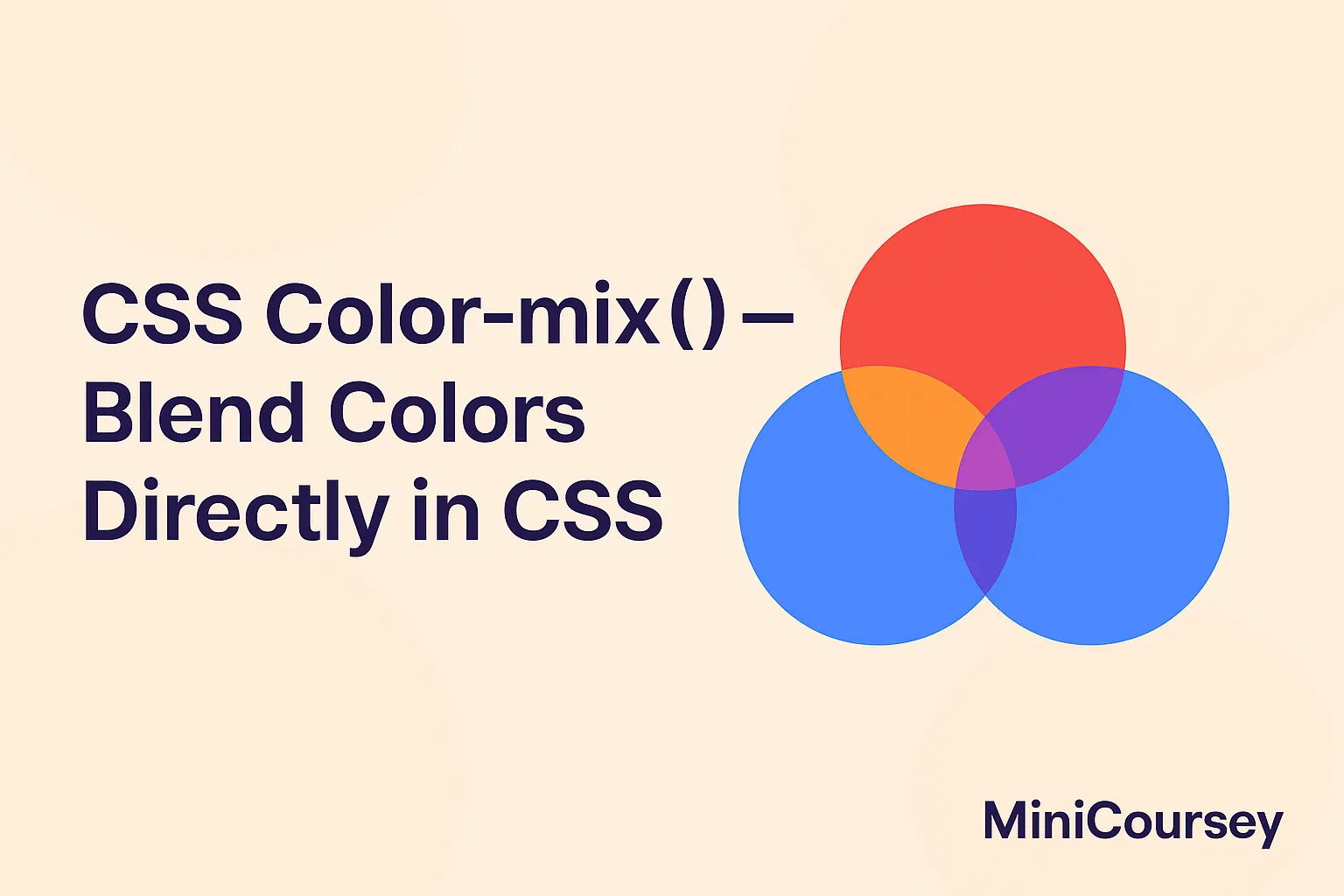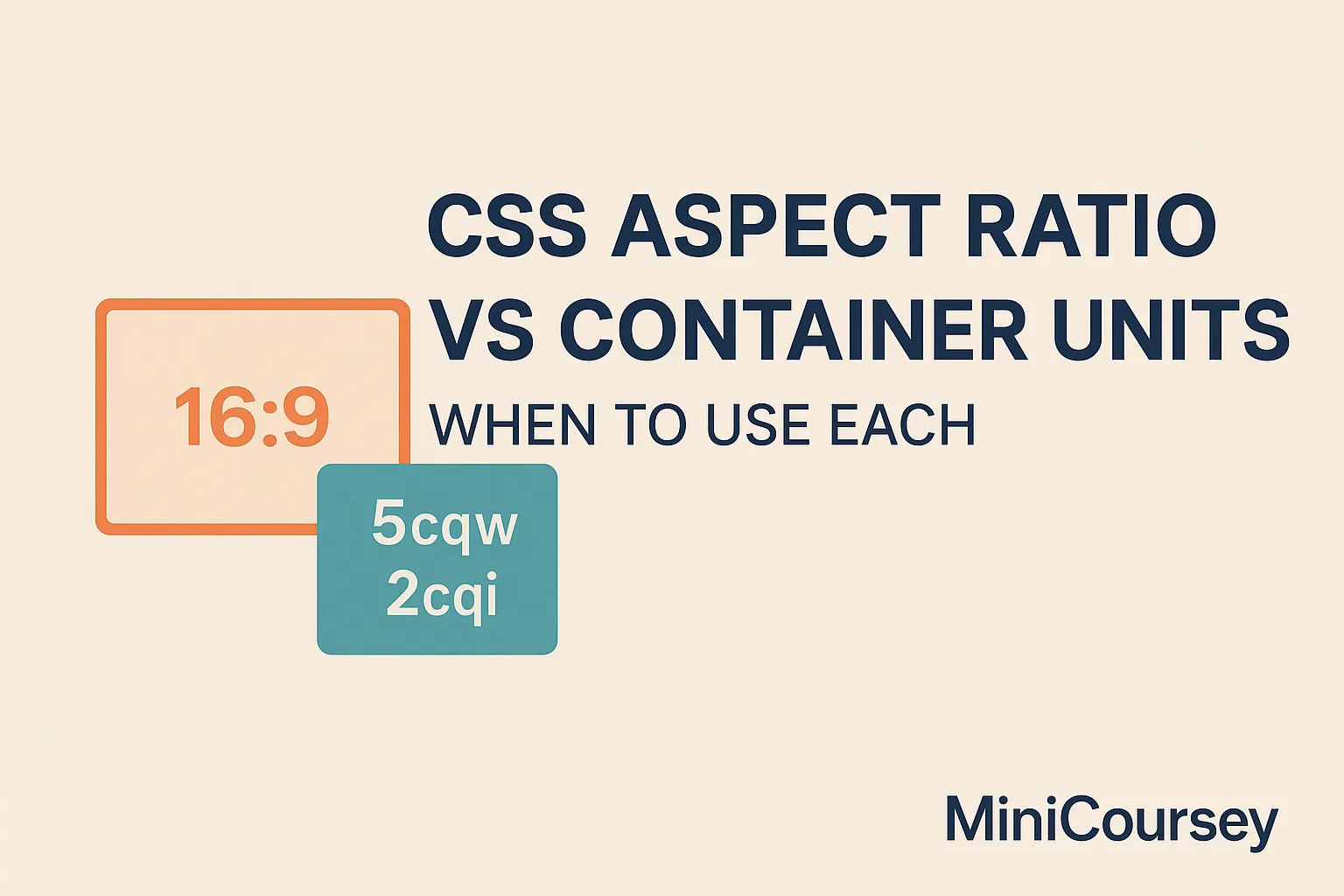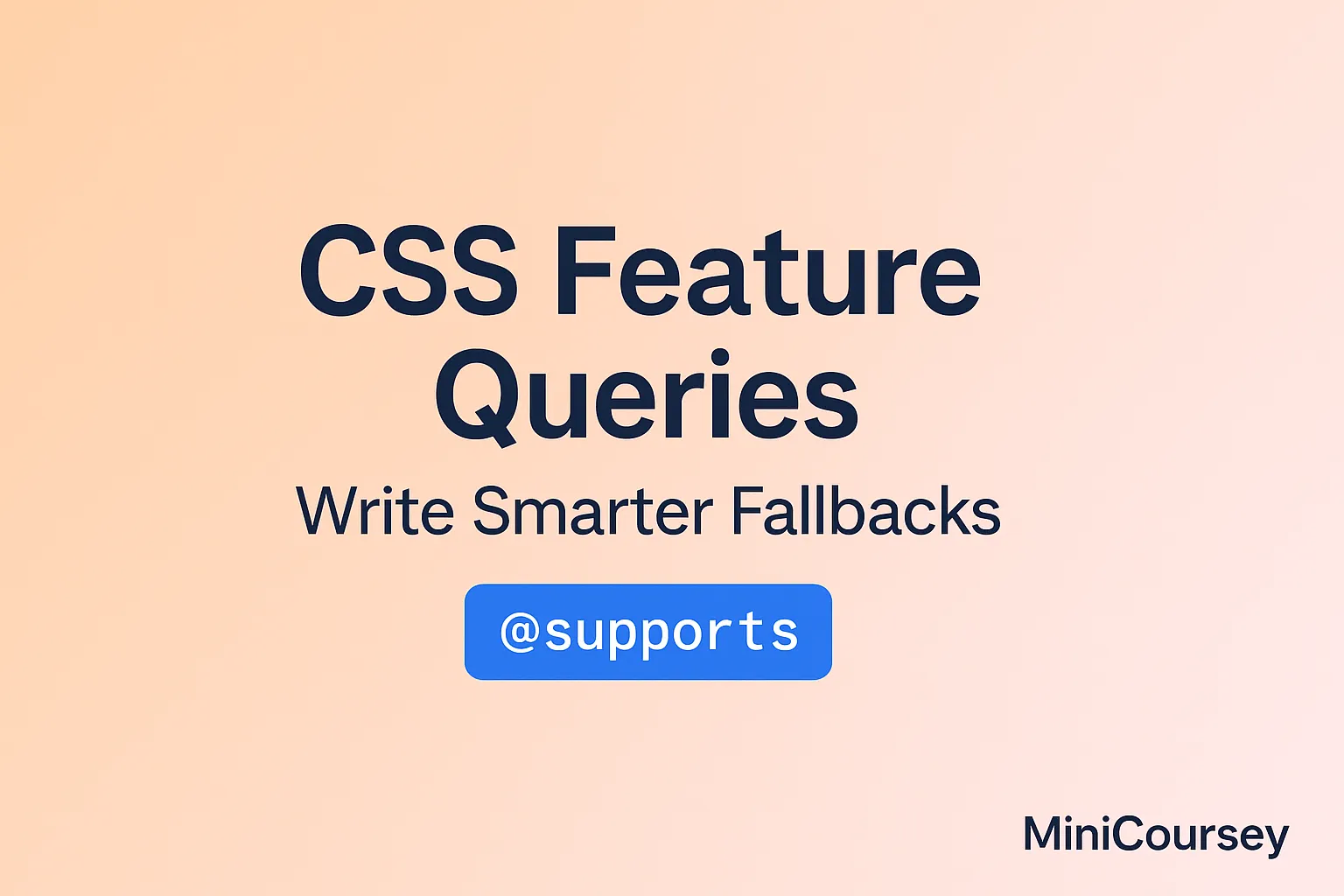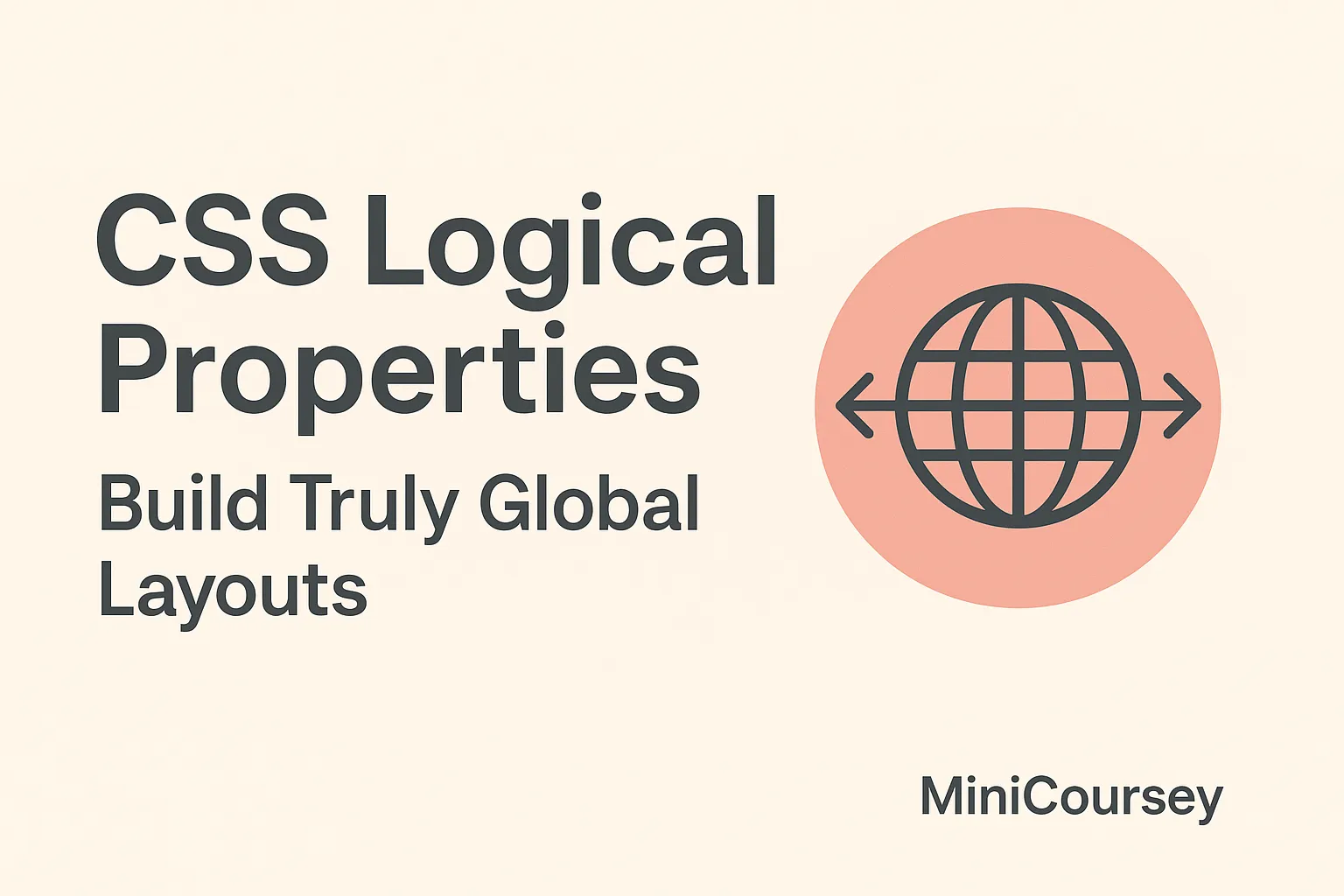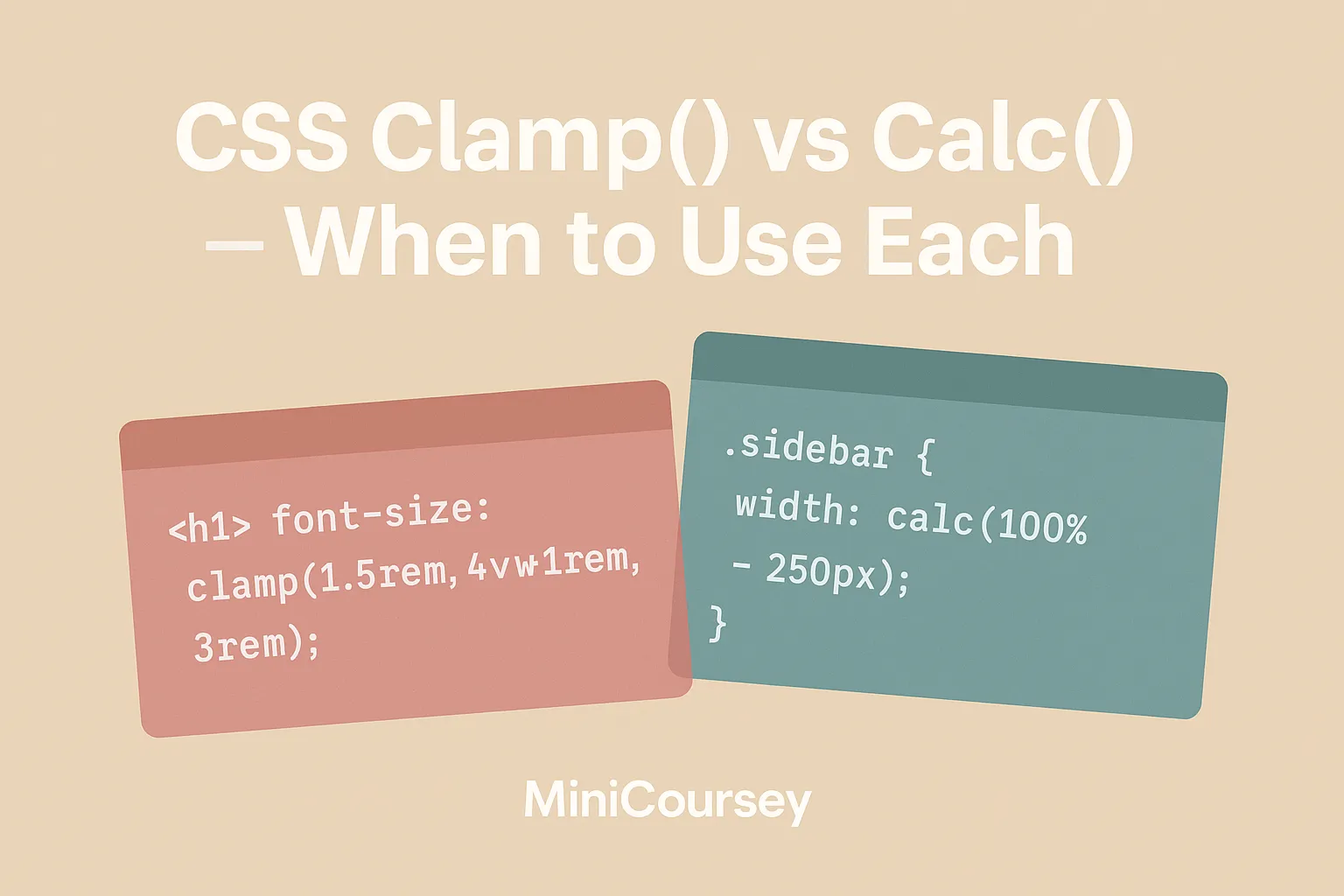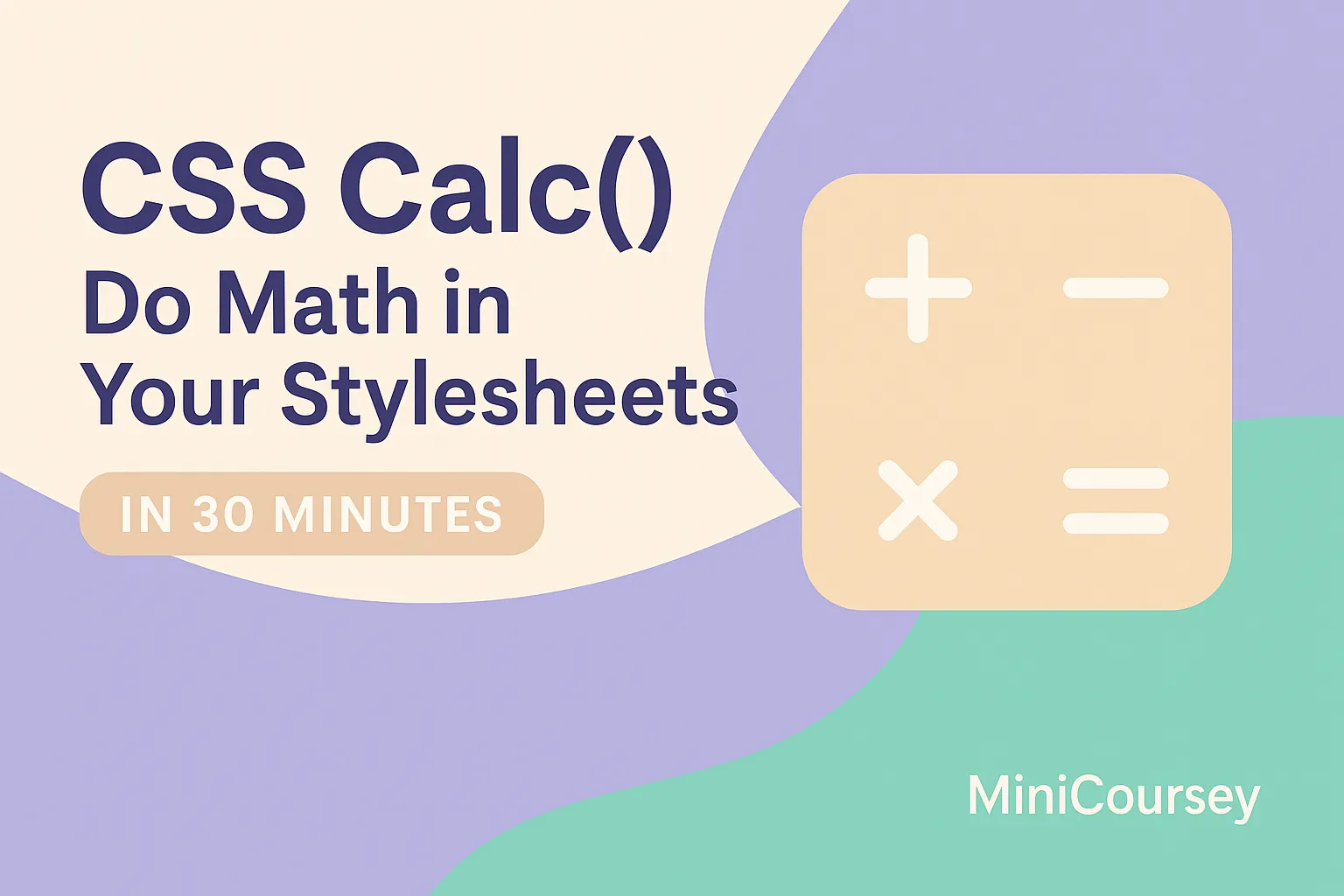CSS Color-Mix() — Blend Colors Directly in CSS
Need a fresh tint or blend for your brand colors but don’t want to switch to a design tool or SCSS? Meet color-mix()! This modern CSS function lets you mix two or more colors directly in your stylesheet — no extra preprocessor needed. It’s perfect for generating tints, shades, or overlays on the fly, making … Read more

